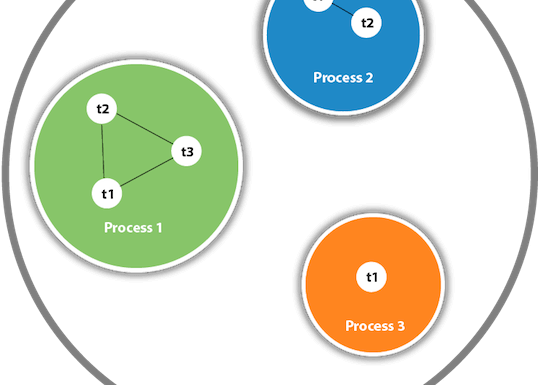Introduction:
In the world of software development, performance and responsiveness are crucial factors. Java, a versatile and widely-used programming language, offers powerful features for managing concurrent execution and achieving parallelism through multithreading. In this comprehensive guide, we’ll delve into the realm of concurrency and multithreading in Java, exploring their concepts and challenges, while providing practical coding examples.

Understanding Concurrency and Multithreading:
Concurrency refers to the ability of a program to manage multiple tasks that appear to be executing simultaneously. Multithreading, a subset of concurrency, involves running multiple threads within a single process. Each thread represents an independent flow of execution, allowing the program to perform tasks concurrently, leading to enhanced performance.
Coding Examples: Java Threads
Let’s dive into practical coding examples to understand how threads are created and managed in Java.
class MyThread extends Thread {
public void run() {
for (int i = 1; i <= 5; i++) {
System.out.println("Thread " + Thread.currentThread().getId() + ": Count " + i);
}
}
}
public class ThreadExample {
public static void main(String[] args) {
MyThread thread1 = new MyThread();
MyThread thread2 = new MyThread();
thread1.start();
thread2.start();
}
}In this example, we create two threads using the Thread class by extending it and overriding the run() method. The start() method initiates the threads, and they run concurrently, displaying their respective counts.
Thread Synchronization:
Concurrency brings challenges like race conditions and thread interference. Proper synchronization is essential to ensure that threads access shared resources safely and avoid conflicts. Java provides synchronization mechanisms, such as the synchronized keyword and Lock interfaces, to manage thread access to critical sections.
class Counter {
private int count = 0;
public synchronized void increment() {
count++;
}
public int getCount() {
return count;
}
}
public class SynchronizationExample {
public static void main(String[] args) {
Counter counter = new Counter();
Thread thread1 = new Thread(() -> {
for (int i = 0; i < 1000; i++) {
counter.increment();
}
});
Thread thread2 = new Thread(() -> {
for (int i = 0; i < 1000; i++) {
counter.increment();
}
});
thread1.start();
thread2.start();
try {
thread1.join();
thread2.join();
} catch (InterruptedException e) {
e.printStackTrace();
}
System.out.println("Final Count: " + counter.getCount());
}
}In this example, two threads increment a shared counter. By using the synchronized keyword in the increment() method, we ensure that only one thread can modify the counter at a time, avoiding race conditions.
Conclusion:
Concurrency and multithreading are fundamental concepts in Java programming that empower developers to harness the potential of parallelism for improved performance. By mastering thread creation, synchronization, and managing shared resources, you can create efficient and responsive applications. With the right approach and understanding, you’ll be able to navigate the intricacies of concurrency, mitigating challenges while reaping the benefits of multithreaded programming.
Remember, while concurrency can enhance your applications, it requires careful planning and consideration. With these coding examples and insights, you’re better equipped to make informed decisions and create Java applications that excel in both efficiency and responsiveness.
